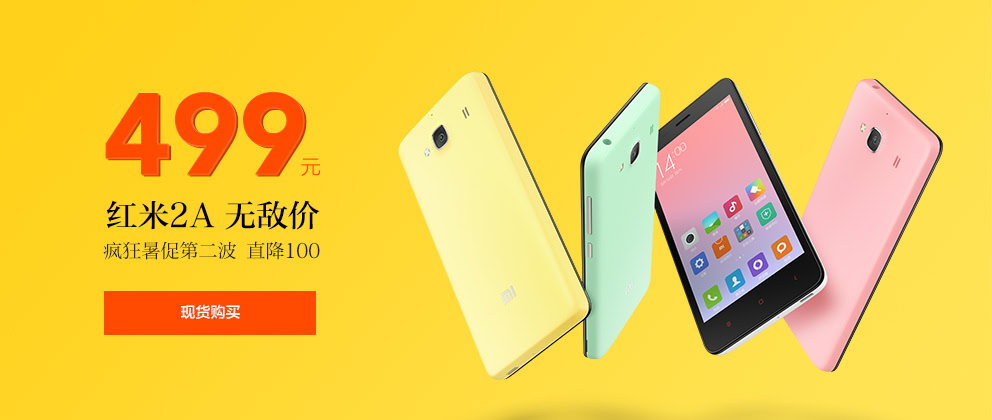Affiliate links on Android Authority may earn us a commission. Learn more.
Xiaomi’s cheapest phone is now just $80

Xiaomi has climbed to the top of the smartphone industry with savvy marketing and cutthroat pricing. But just how cheap can Xiaomi go? For now, the answer is about $80. The Redmi 2A is now just 499 yuan ($80) in China, and you will be hard pressed to a lower price for a similar device.
Xiaomi launched the Redmi 2A on March 31, during its fifth anniversary event that also brought the release of new 4K TVs, a connected scale, and the pink edition of the Mi Note.
The Redmi 2A features a 4.7-inch 720p display, a Leadcore L1860C processor, 1GB of RAM, 8GB of storage, a 2,200-mAh battery, TD-LTE dual-SIM, and Android 5.0 Lollipop. This is a barebones device, but the specs are actually decent for the low price of the Redmi 2A.
[related_videos align=”left” type=”custom” videos=”594382,588731″]
Initially, the phone was supposed to cost 599 yuan, the equivalent of $100, but now Xiaomi is offering it for just 499 yuan ($80); the device is on open sale today in China, and the company boasts it managed to sell 200,000 units in just seven hours.
The Redmi 2A is, for now, a China-only device, as it only supports TD-LTE connectivity. But it’s likely that Xiaomi will sell a 2A variant or a similar phone in India and in the other markets where it’s currently active (including Malaysia, Indonesia, the Philippines) as well as in Brazil, where the company will open shop later this year.
Xiaomi is able to deliver a “good enough” smartphone experience at $80 to $100, which has profound implications for the industry. Millions of people in the developing world are vying to get their first smartphone and Xiaomi will be a prime option for them. When Xiaomi is offering a fairly decent HD phone for $80, more expensive devices from Samsung, HTC, or even Lenovo/Motorola don’t stand a chance. For now, Xiaomi seems happy to gobble up market share at the low-end, even if it’s functioning almost at cost. In the process, the company is pressuring competitors to bring down their prices, in a typical example of market commoditization.